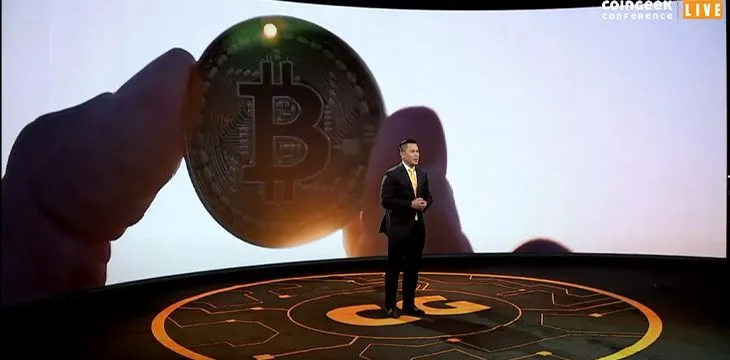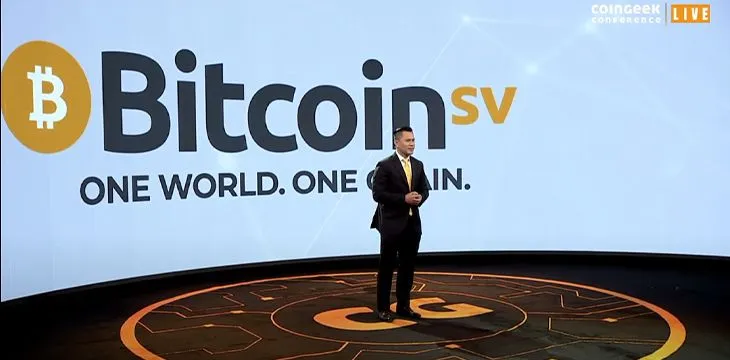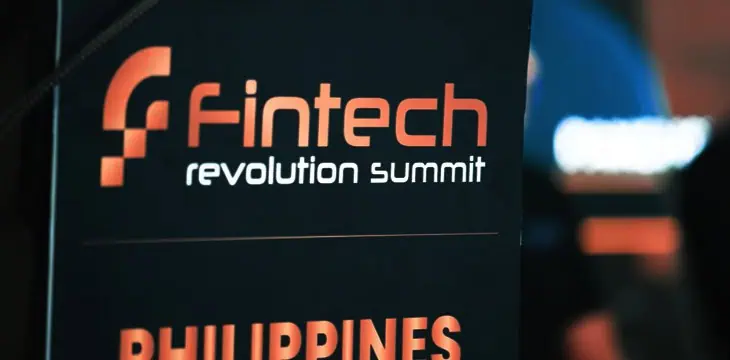|
Getting your Trinity Audio player ready...
|
Bitcoin Association Founding President Jimmy Nguyen has kicked off the CoinGeek Live event, stressing its theme of “one world chain.” It’s the notion that Bitcoin is a new network protocol that can rival or even replace today’s internet, with a global ledger of truth that can verify and timestamp when events happened—something today’s internet cannot do in a reliable way.
Nguyen welcomed those from the Bitcoin SV community and also others working on blockchain projects outside the Bitcoin world. We want to engage in a dialog with the entire technology industry, he said, sharing the idea of a network that scales, offers more access, and more interoperability.

There are over 5,000 blockchain ledger projects in the world today, Nguyen added. This is because people simply didn’t believe in Bitcoin or Satoshi Nakamoto‘s original vision. Even within the Bitcoin community itself, there were many who couldn’t see past Bitcoin as a “digital asset.” They kept its capacity and functionality limited and, as a result, its progress has stagnated.
That changed at the start of 2020 when Bitcoin BSV restored the Bitcoin protocol as described in Satoshi’s 2008 Bitcoin whitepaper. Satoshi described Bitcoin around that time as “a distributed timestamp server—a history of events that is chronological, auditable, and transparent.
“That provides immense business power,” Nguyen said.
A fusion of data and money
There are a few steps to educating people about Bitcoin, especially newcomers. The first is that Bitcoin is more than just a new form of money (the common perception out there). “It’s a fusion of data and money,” he said, a way to ascribe monetary value to data, a way to own and monetize that data. Bitcoin is also not looking to replace current monetary system, but the way they’re managed. Bitcoin’s contract and tokenization capabilities can handle any or all of the world’s existing currencies as well as tracking ownership of other assets, managing devices, and computing with on- and off-chain data.
Bitcoin is “the foundational rule set for an entire network,” and is “re-inventing the internet,” he said. It is fast and low-cost, and has incentives that discourage bad behavior. This makes human and machine engagements more honest, since they can be proven right or wrong on one ledger that everyone can trust.
As he has pointed out in previous presentations, the Bitcoin whitepaper mentions “honest” 15 times. Moreover, Bitcoin had the capabilities to do all this in its original iteration.
But to make it work, “you’ve got to scale and you’ve got to scale big.”
Scaling at low cost opens many opportunities
Before 2017, Bitcoin had the capacity to handle only around seven transactions per second. This could never achieve mass adoption, and Nguyen likened it to the original email protocol being limited to seven messages per second worldwide… and deliberately keeping it that way for years.
Even Ethereum, where many disillusioned former Bitcoiners have turned, has scaling problems. Recently its “gas” and transaction fees have hit record highs—and you can’t have a network designed for tokenization and contracts executing at scale with those sorts of costs. Bitcoin, on the other hand, had a median transaction fee of 1/100 of a U.S. cent “and we think that’s too high.” Bitcoin currently processes over 2,800 transactions per second on its mainnet, and could hit 50,000 in the near future. The Teranode enterprise-tier protocol is looking to 1TB transaction blocks, all while keeping fees low.
Bitcoin offers scalable solutions for health care, clinical research, esports and gaming, supply chains, casinos, social media, financial service, and even “regtech” (regulatory technology). It breaks down data silos that prevent reliable information being shared between platforms but putting everything on one base ledger and accessible in real-time.
Bitcoin, he stressed again, is the opposite of anti-government. It promotes honesty, openness and efficiency, and could easily be a better internet.
“You’ll see many use cases emerging,” Nguyen said near the conclusion, inviting attendees online to “see this bigger vision.” The next few days will offer plenty of those, many of which are ready or almost ready for release. Bitcoin works now, it will work even better in the future—and this has been Satoshi’s vision from the start.
https://www.youtube.com/watch?v=FAEoXeN0b8M&feature=emb_logo

 07-06-2025
07-06-2025 





